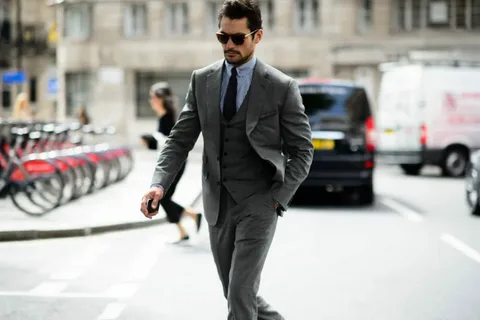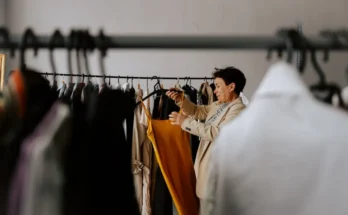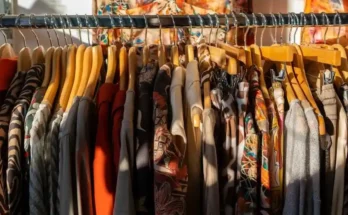When people hear the word fashion, they often think of glossy magazines, high-end runways, or influencers flaunting the latest trends. But fashion is far deeper than seasonal collections or curated Instagram grids. It is a language—a silent but powerful way we communicate who we are, what we believe in, and where we come from.
In a world quick to judge by appearances, fashion becomes both armor and art. It’s an extension of our personalities, shaped by our experiences, heritage, beliefs, and moods. Whether consciously or not, we are always choosing how to present ourselves to the world. And those choices speak volumes.
The Deeper Meaning of Fashion:
More Than Fabric and Fit
Fashion is often misunderstood as superficial, even frivolous. But this view couldn’t be further from the truth. At its core, fashion is an intimate expression of self. It’s how we shape identity in a visible, tactile form. The colors we wear, the cuts we choose, even the accessories we favor—each decision tells a story.
Clothing has been part of cultural, political, and social revolutions throughout history. From protest T-shirts to ceremonial robes, fashion carries meaning. It can be a form of resistance, pride, mourning, or celebration. The texture of a scarf, the silhouette of a jacket—these aren’t just style choices. They are declarations.
Fashion as a Cultural Mirror
Fashion reflects the world we live in. It evolves with society and often anticipates it. From the flapper dresses of the 1920s to the minimalist techwear of today, each era’s dominant style reveals the hopes, fears, and spirit of its people.
It’s also deeply cultural. What’s fashionable in Tokyo may look different from what’s trending in Lagos or Paris. Fashion is a bridge between tradition and innovation—a way of honoring heritage while embracing evolution. In every society, garments hold memory and meaning. The fabrics used, the patterns woven, the way something is draped or worn—each carries cultural DNA.
How Fashion Defines and Reflects Us?
Identity Through Aesthetic
Everyone has their own unique aesthetic, even if they don’t think of themselves as “fashionable.” It’s how we choose our clothes for different moods, occasions, or aspirations. The hoodie you wear when you’re writing late into the night. The sharp suit you save for interviews. The bold lipstick that makes you feel fearless. These aren’t just wardrobe decisions—they’re identity markers.
Your fashion doesn’t need to be loud to speak clearly. Sometimes the quietest outfit carries the deepest confidence. The truth is, fashion is not about how much skin you show or how much money you spend—it’s about how true your outfit feels to who you are inside.
Personal Style vs. Fashion Trends
Trends come and go, but personal style is timeless. It evolves with you. It grows as you grow, shaped by your experiences, body, beliefs, and sense of self. Some people find comfort in classic pieces; others use bold looks to express their creativity. Both are valid. Both are fashionable.
Understanding the difference between trends and personal style is freeing. You don’t have to chase what’s “in” to be stylish. The most impactful fashion statements come from those who wear what makes them feel most like themselves.
Fashion Is Not Vulgarity:
Reclaiming the Narrative
A common misconception is that fashion, particularly women’s fashion, equates to revealing or provocative dressing. This assumption not only misunderstands fashion—it undermines its power. What a person wears is a personal choice, and one that deserves respect, not judgment.
Fashion is about intention, not exposure. A modest outfit can be as bold as a crop top, depending on how it’s styled and what it means to the wearer. Vulgarity doesn’t come from clothing—it comes from how we perceive it. And often, that perception is shaped more by societal bias than the clothes themselves.
Empowerment, Not Objectification
Fashion can be empowering without being provocative. And yes, it can also be empowering when provocative—but the key difference lies in control. When a person dresses for themselves, rather than for the male gaze or societal approval, they are reclaiming power.
An oversized blazer can be as revolutionary as a bodycon dress, depending on who’s wearing it and why. Fashion is about expression, not permission. It’s not about what is deemed “appropriate” by outdated standards but about how a person wants to be seen and understood.
Fashion as Emotional Language:
Dressing for the Way We Feel
We often choose our outfits based on how we feel—or how we want to feel. On low days, a soft sweater might act like a hug. On days when confidence runs high, bold prints and daring colors might mirror our inner fire.
This emotional link is what makes fashion so powerful. It allows us to project our internal world outward, to carry pieces of our story on our sleeves—literally. When we dress with intention, we align our external image with our inner truth. And that kind of authenticity never goes out of style.
The Role of Fashion in Mental Health
Fashion can also be a form of self-care. Taking time to dress in a way that feels good can shift your mood, even your mindset. It creates routine, fosters creativity, and can give you a sense of control in an unpredictable world.
In therapeutic spaces, fashion is sometimes used as a tool for rebuilding identity, especially after trauma. That alone is proof: fashion is not just vanity—it’s healing, reclaiming, affirming.
The Fashion of the Future:
Fashion isn’t just about how something looks—it’s about how it’s made. In the 21st century, ethical and sustainable fashion is taking center stage. People are becoming more conscious of who makes their clothes, what those workers are paid, and how the planet is impacted by our style choices.
Buying less and buying better. Supporting local makers. Choosing pieces that last. These are not trends—they are acts of fashion that have long-term consequences. The way we dress can reflect our values, not just our tastes.
The most exciting evolution in fashion today is the move toward inclusivity. More brands are recognizing that style has no size, gender, age, or ability limit. The fashion world is slowly but surely expanding to reflect the beautiful diversity of the people it serves.
Everyone deserves to see themselves in fashion—not as an afterthought, but as the main character. Style is for you, exactly as you are.
Conclusion:
At the end of the day, fashion is not just about clothing. It’s about identity. It’s about how we show up in the world, what we choose to reveal, and what we hold sacred. It’s about art, culture, memory, emotion, and yes—sometimes even rebellion.
You don’t need to follow fashion to live it. If you’ve ever dressed for a special day, found comfort in your favorite sweater, or smiled at your reflection because you felt like you—then you already understand its power.
So wear what speaks to you. Dress for your dreams. Style your truth. Because fashion isn’t about being seen—it’s about being understood.




